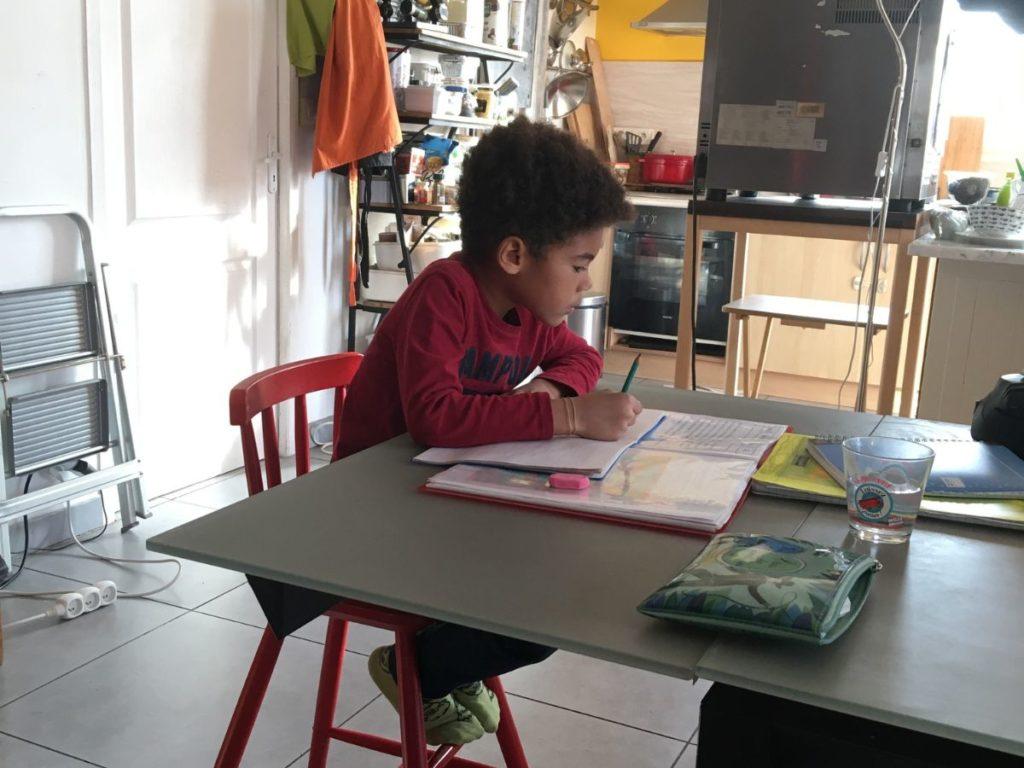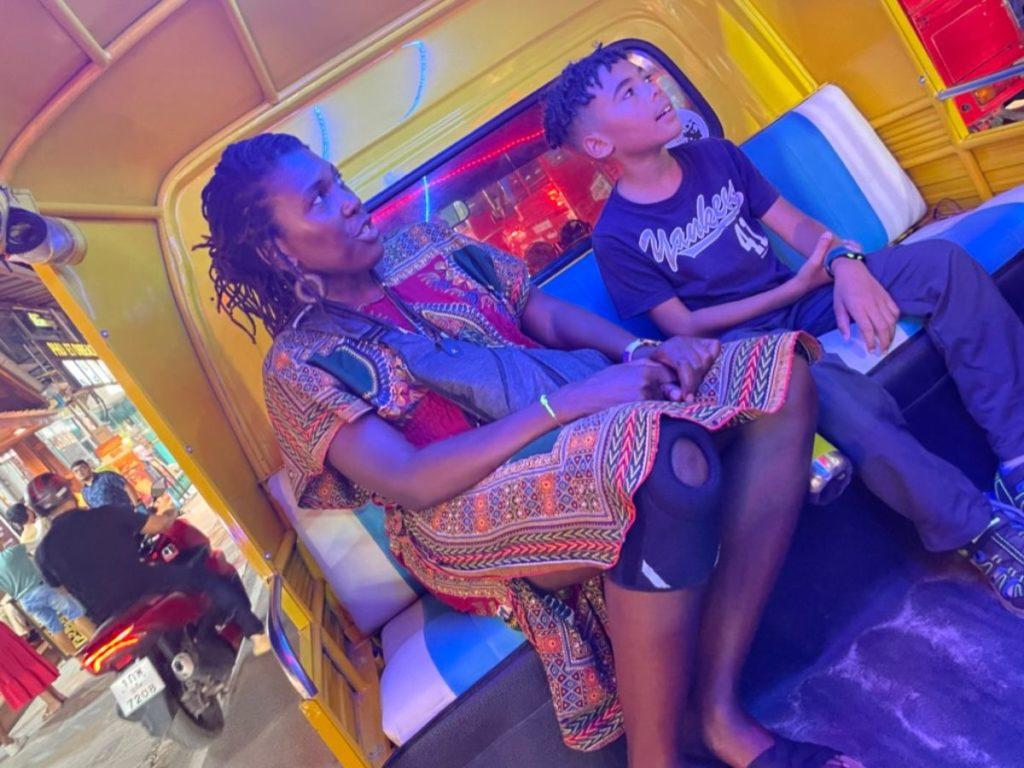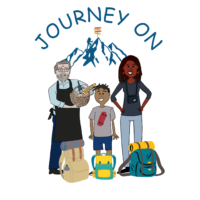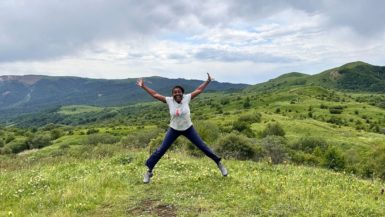Since we announced our world tour to our friends and family, two questions have consistently come up:
Why take a world tour? How are you doing it, or how will you do it? I partially answered the first question in my introduction.
Why Take a World Tour & How to Do It?
It’s simple, to see something different, experience diverse adventures, get closer to people who live differently, indulge in delicious cuisines, and most importantly, spend time with locals, offer help if possible, humbly recognizing the privilege of being born in the right place.
For us, it’s a passion, both for Yetunde and me, but also for our son Rémi. We want to offer him the opportunity to see the world. As they used to say, to open his eyes to diversity, to teach him that elsewhere is different. It’s not about comparing or judging, but about understanding that growing up in Cuba, New Zealand, or Spain can differ vastly.
I hope he’ll carry these memories throughout his life, and his worldview will inspire him to contribute to building a better world. (Ambitious? YES!)

How are you doing it, or how will you do it?
The second question is harder to answer. Even though we’ve already set out when I’m writing this post, I’m still searching for one or more answers 🙂
The question is interesting and, more importantly, complex, as it involves several aspects of the journey. Depending on who asks, the answer might differ.
Financially?

The most challenging to answer.
For about a year, we restructured the teams at our cooking school in Paris, Cook’n With Class, and revamped Let’s Eat the World and its culinary weeks. This was done to keep the companies healthy remotely, and mainly by delegating as much as possible to our fantastic teams on-site.
We had saved up for about a year to cover a significant portion of the trip’s costs. We also rented out our house to avoid unnecessary expenses. We stored our car in the garage with garage insurance and got travel health insurance from Chapka, a well-known choice among world travelers.
We began our journey with the first month already paid for in advance—Cuba. We arranged it through an agency, je pars a Cuba, along with Mélanie. They organized accommodations, a driver with his old 1953 Chevrolet, for a full 18 days, along with some essential excursions and visits. I’ll elaborate on Cuba in early August when we’re in Mexico, the next destination on our trip.
While enjoying ourselves, we’re traveling frugally—few expensive restaurants, no pointless activities, no compulsive purchases.
We use the Travelspend app to track all our expenses, maintaining a certain control and planning to have a country-wise breakdown for sharing with other travelers if it helps.
Remi’s schooling?

Well, let’s be honest. He’s 9 years old and will turn 10 when he returns to school in September 2024. He already speaks three languages and has done well in school (grade 5). With some math and French lessons with Dad, along with Lumni‘s textbooks and videos, it should suffice. He’ll study the grade 6 curriculum and we’ll see if he needs additional catch-up lessons upon our return. But his school will accept him without him losing a year, placing him in 6th grade or its equivalent. Travel broadens the mind… He’ll have visited 15 countries, interacted with Indians in Panama, surfed in Tahiti, seen the Galápagos and Easter Island, had barbecues in New Zealand, enjoyed sushi in Tokyo (his favorite meal),… What more could one ask for?
Trip planning?

Do you have time? It took me 6 months to come up with a solid plan, changing it 10 times, and I’m sure it will change again. In fact, that’s the idea—plan, but not too rigidly, always keeping the option to stay longer or leave if we feel like it.
First, we made a list of countries and places we wanted to visit (Machu Picchu and Peru were Yetunde’s priority, and Japan for Rémi).
We read blogs, and travel accounts, and got plenty of great information from the website “Tour du Mondiste ,” especially about backpacks and what to take on the journey, budget details:
Then, we used the “Tour du monde à contre-sens” website to organize the countries in a logical order, trying to minimize air travel and be in the right place at the right time for the climate, while avoiding the touristy masses in some destinations. We aimed to avoid peak season prices and maximize our days. Not easy, and it requires compromises.
Once we picked the destinations (13 months means 12-15 countries at most if we really want to understand a place’s complexity and diversity, not just spend a week), we added the number of days for each country—how long we wanted to stay there. For example, a minimum of 15 days for Costa Rica and Panama, and up to 30 for Mexico. Then, we adjusted, removed, replaced, and changed—using a very practical website.
The idea is to have an exit flight to the next destination upon entering a country, an “open” flight if we want to leave earlier or later. We’ll book the first 2 or 3 nights in a hotel, B&B, or other lodging. After that, we’ll improvise, keeping in mind the places we want to see in each country.
Accommodation?

Always a tricky aspect, often the largest part of the budget after flights and costly activities like balloon rides or diving. We’ll mix it up—hotels for transit nights, staying with locals for several nights (though not in the same space), sometimes in guesthouses, Airbnb, or camping (a van in New Zealand). Each country is different, and we’ll make do as best we can.
Transport?

Flights for long distances or if the bus ride exceeds 8 hours. Otherwise, buses and car rentals, trains in Japan, bicycles and motorcycles in Vietnam, camels, and tuk-tuks if available.
Our companies and employees?
For nearly a year, we’ve been steering Cook’n With Class toward autonomy with a director, a marketing assistant, and several new chefs and kitchen staff. Letting go and delegating hasn’t been easy, but it’s necessary. Of course, we keep an eye on the numbers and maintain constant contact with the teams.
Illnesses, vaccinations, languages, flights, dangerous animals?
We have travel insurance dedicated to world travelers, Chapka, which covers health issues or flight problems, repatriating us if needed—for us or our loved ones. We’ve kept up with routine vaccinations and got yellow fever shots before leaving.
The real threat is mosquitoes, not lions, so we’ll wear long pants and shirts with tight ankles in highly infested areas, using high-quality mosquito repellent. We also have foldable protection for two, maybe three (with Rémi sandwiched in), a kind of giant cage/mosquito net (LEMESO Bed Mosquito Net Pop-Up, Amazon).
We speak English, Spanish, and French, and we’ll need them on the planned route. For countries like Japan, Korea, or Vietnam, we’ll try to learn some polite vocabulary. Hunger justifies the means 🙂
The house in Seville?
Pour ne pas payer le loyer pour rien ou mettre nos affaires en garde-meubles, on a trouvé des sous-locataires qui nous remplaceront une bonne partie du voyage, Avec l’accord du proprio de la maison, C’était une condition indispensable au succès du voyage, car financièrement, il fallait que l’on n’ait que les dépenses du voyage à payer et rien d’autre,
The return?
What return?
Rémi resumes school in Seville on September 1st, 2024, so we’ll be there. For him, it’s a new school (but with friends), so there’s likely to be some stress before the start. For us, it’s back to business and back-and-forth trips between Seville and Paris to get back into action, and reconnect with family and friends we’ll have missed greatly.
We’ll surely want to find a calm routine in Seville again. I can imagine feeling a bit of the blues too. Returns can be challenging with the adrenaline drop, but I know we’ll be planning the next trip. This time, heading further north and for a shorter duration.





Ravie pour vous ! Nous allons suivre votre voyage de près ! Je rajouterai juste, mais je suis sûre que tu l’as bien en tête…que ce voyage va vous permettre de passer du temps qualitatif ensemble, tous les 3 , de partager des souvenirs et de voir grandir Rémy comme jamais ! Profitez bien les amis, la bise aux citoyens du monde 🤪
Hola de Merida Mexico, Le voyage avance lentement comme prévu 🙂 On dépense bien plus que prévu mais c´était prévu ! haha… Par contre on s’éclate a fond, niveau repas c´est top, on adore, et effectivement le moment en famille est très qualitatif ! on n´a pas encore arraché la tête de Rèmi mais ça peut arriver a tout moment 🙂 Tous les 3 ou 4 jours on prend un jour de repos et une fois par semaine si on peut on fait une activité plus pour lui (nager avec les tortues, musées rigolos,,, ) On reste en contacte , bientot le retour pour vous et la fin du voyage ? Bises a vous 5
Merci beaucoup, Ludivine.
Excellent!!! So happy and excited for you guys!!! Thank you for the great tips and for taking us along. Have a wonderful adventure!
You’re welcome, Prissy! Enjoy the ride!